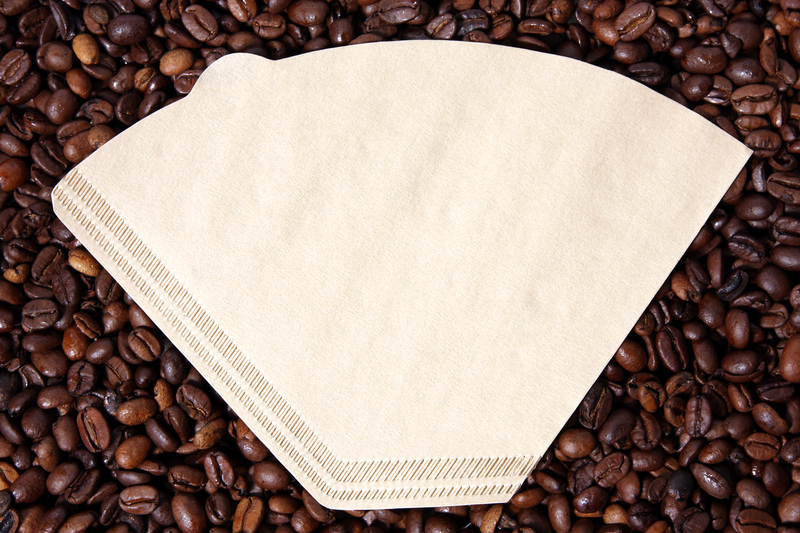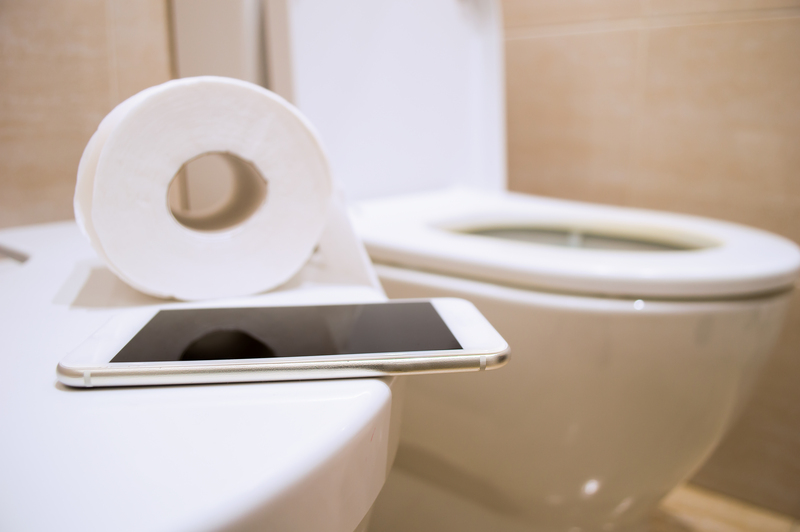Leave Grease Behind: Simplified Cleaning for Enamel Oven Trays
Posted on 15/06/2025
Leave Grease Behind: Simplified Cleaning for Enamel Oven Trays
Enamel oven trays are a staple in many kitchens, prized for their durability, heat distribution, and non-stick qualities. Yet, once grime and grease set in, cleaning these trays feels daunting. If you're tirelessly scrubbing or using harsh chemicals to clean your enamel oven trays, it's time to leave grease behind and embrace simplified cleaning for enamel oven trays. This article will guide you through effective, gentle, and time-saving methods that preserve your trays' luster. Keep reading for a comprehensive breakdown of enamel oven tray cleaning - from daily maintenance to deep cleaning techniques.

Why Choose Enamel Oven Trays?
Before delving into how to clean enamel oven trays, it's beneficial to understand why enamel-coated trays are so popular:
- Durability: Enamel resists scratches and withstands high oven temperatures.
- Non-stick Surface: The smooth coating makes cooking and cleaning easier.
- Non-reactive: Enamel doesn't react with acidic foods, making it versatile for baking and roasting.
- Aesthetically Pleasing: Their shiny, glazed look complements kitchenware.
Despite their advantages, enamel trays still fall victim to baked-on grease and food residue. But with the right approach, you can revive their shine -- quickly and effortlessly.
Understanding Grease and Stains on Enamel Oven Trays
Grease is the primary culprit causing your enamel trays to appear dirty and neglected. When exposed to high oven heat, fat from food splatters and bakes onto the enamel surface, creating seemingly stubborn stains and sticky film. Over time, these stains harden, complicating the cleaning process if not addressed routinely.
- Common contaminants: Animal fats, cooking oils, sugars, and acidic food residues
- Risk of damage: Aggressive scrubbing or harsh chemicals can dull or chip the enamel layer, reducing lifespan
- Aesthetics: Stains and discolored patches detract from your tray's visual appeal
The solution lies in smart enamel oven tray cleaning techniques - gentle, efficient, and mindful of preserving your tray.
Preparation: What You'll Need for Simplified Cleaning
Before diving into the cleaning process, gather essential supplies. While there are commercial cleaners for enamel oven trays, most everyday stains can be tackled using natural, non-toxic ingredients:
- Baking soda
- White vinegar
- Lemon juice
- Mild dish soap
- Soft sponge or microfiber cloth
- Plastic scraper (for loosening stubborn bits)
- Warm water
- Old toothbrush or small brush
- Rubber gloves (to protect hands)
Tip: Avoid steel wool or abrasive scrubbers, which can scratch or chip your enamel oven trays.
Step-by-Step Guide: Simplified Cleaning for Enamel Oven Trays
1. Act Fast: Clean After Every Use
The easiest way to keep your enamel oven trays sparkling is to clean them soon after use. Grease and food residue are far easier to remove when fresh, preventing build-up and staining.
- Allow your tray to cool slightly - never place a hot tray in cold water as rapid temperature changes can cause the enamel to crack.
- Use a paper towel or spatula to remove excess grease and scraps.
- Rinse with warm water to soften any remaining residue.
This quick rinse prevents grime from baking on, saving you considerable effort later.
2. Routine Cleaning with Soap and Water
For everyday maintenance, a simple soak and wash is all you need:
- Fill your sink or tub with warm water and add a few drops of mild dish soap.
- Submerge the enamel oven tray for 10-15 minutes. This softens stuck-on foods and grease.
- Use a soft sponge or cloth to gently scrub in circular motions, focusing on greasy spots.
- For hard-to-reach corners or ridges, use an old toothbrush.
- Rinse thoroughly under warm water.
- Dry with a clean towel to prevent water spots and maintain shine.
*This method preserves your tray's surface and is gentle enough for daily cleaning.*
3. The Baking Soda and Vinegar Hack for Stubborn Grease
Even with prompt cleaning, some stains and grease patches persist. One of the best enamel oven tray cleaning methods involves natural ingredients: baking soda and vinegar.
- Sprinkle a generous layer of baking soda over the tray, especially on stained or greasy sections.
- Spray or pour a small amount of white vinegar on top. Watch as it fizzes - this helps lift stubborn grime.
- Allow the mixture to sit for 15-20 minutes.
- With a soft sponge, gently scrub the surface. For edges and crevices, use a soft brush or toothbrush.
- Rinse thoroughly and dry immediately with a clean towel.
This natural combo is powerful, eco-friendly, and won't harm your enamel coating.
4. Lemon's Magic Touch
Lemon juice is an excellent ally for battling grease and neutralizing food odors from enamel trays:
- Halve a lemon and rub it directly over greasy areas.
- Let the juice sit for 10-15 minutes to break down oils.
- Wipe clean with a soapy damp sponge.
- Finish by rinsing and drying thoroughly.
Lemon not only cleans but leaves your tray smelling fresh!
5. Deep Cleaning for Extra Tough Stains
If regular cleaning isn't enough to tackle deeply baked-on residues, try this deep cleaning approach:
- Mix baking soda and water to create a spreadable paste.
- Apply the paste thickly over stubborn stains or burnt-on food.
- Let the tray sit for several hours or overnight, covered with cling film to prevent drying.
- Use a plastic scraper or the edge of a spatula to lift softened residue.
- Finish by washing, rinsing, and drying as usual.
Select this method for occasional, intensive cleans to restore your enamel tray to its original shine.
What to Avoid When Cleaning Enamel Oven Trays
To prolong the life and maintain the stylish appearance of your enamel oven trays, keep these DON'Ts in mind:
- Don't use steel wool, abrasive scouring pads, or metal brushes. These can scratch and chip the enamel, leading to rusting underneath.
- Don't use harsh chemicals such as oven cleaners, bleach, or ammonia-based products unless specifically labeled safe for enamel. Prolonged use can erode the finish.
- Don't put trays in the dishwasher if the manufacturer instructs hand-washing. High-wattage dishwashers may dull or damage the coating.
- Don't soak enamel trays for days as water seeping through tiny fissures increases the risk of chipping and rust.
- Don't cool trays abruptly - avoid pouring cold water on hot enamel as sudden temperature shifts can cause cracks.
*Gentle care is essential for keeping enamel trays functional and beautiful for years.*
Preventative Tips: Stop Grease Before It Starts
Simplified cleaning for enamel oven trays also means adopting proactive habits to minimize future cleaning efforts:
- Use parchment or silicone baking mats atop trays when roasting or baking sticky, greasy foods - easy lift, easy clean.
- Apply a light cooking oil spray before use to help food release easily.
- Trim excess fat from meats before cooking to reduce splattering.
- Clean up spills and drips as soon as possible after cooking.
- Store trays in a dry environment to prevent moisture buildup.
By taking small steps before you cook, your tray stays cleaner - making future maintenance a breeze!

Frequently Asked Questions About Enamel Oven Tray Cleaning
Can you use dishwasher tablets to clean enamel oven trays?
Yes, but with caution. Some users find that placing a dishwasher tablet in hot water inside the tray and allowing it to soak helps dissolve tough grease. However, repeated exposure to the chemicals may dull the enamel over time. Always rinse thoroughly after soaking and consult your tray's manufacturer guidelines.
Are commercial oven cleaners safe for enamel trays?
Most commercial oven cleaners contain strong chemicals that can damage enamel coatings. Opt for cleaners specifically labeled as enamel-safe and use only when absolutely necessary. Natural cleaning methods are gentler and often just as effective.
How do you remove burnt-on sugar or caramelized stains?
Burnt sugars can be incredibly resilient. First, let the tray cool. Then:
- Soak in boiling water with dish soap for 30 minutes to soften the hardened sugar.
- Apply a baking soda paste and gently scrub with a soft brush.
- Repeat the process if needed - patience is key for these stains.
Is it safe to use bleach on enamel trays?
Bleach should be avoided unless the enamel manufacturer explicitly approves its use. Bleach is corrosive over time and can degrade both the colorful enamel finish and the underlying metal.
What should I do if the enamel tray is chipped?
Stop using any chipped enamel bakeware for cooking, as the underlying metal may leach into food. Chipped trays can be repurposed for non-food uses (such as plant saucers) or, if minor, recycled according to local regulations.
Conclusion: Shine On with Simplified Enamel Tray Cleaning
Cleaning enamel oven trays doesn't have to be a battle against stubborn, baked-on grease. By implementing these time-saving, natural, and effective cleaning strategies, you can ensure your enamel trays always look their best. With proper care, enamel trays become a reliable, visually striking asset in your kitchen for years to come. Remember, the key to leaving grease behind is a mix of prompt cleaning, using gentle ingredients, and preventing damage by avoiding abrasives and harsh chemicals.
- Act quickly to prevent stains from setting in
- Use safe, household items for most cleaning tasks
- Protect your trays by avoiding common mistakes
With these methods, say goodbye to exhaustive scrubbing and hello to trays that shine every time you open your oven. Leave grease behind - and enjoy effortlessly clean enamel oven trays meal after meal!





